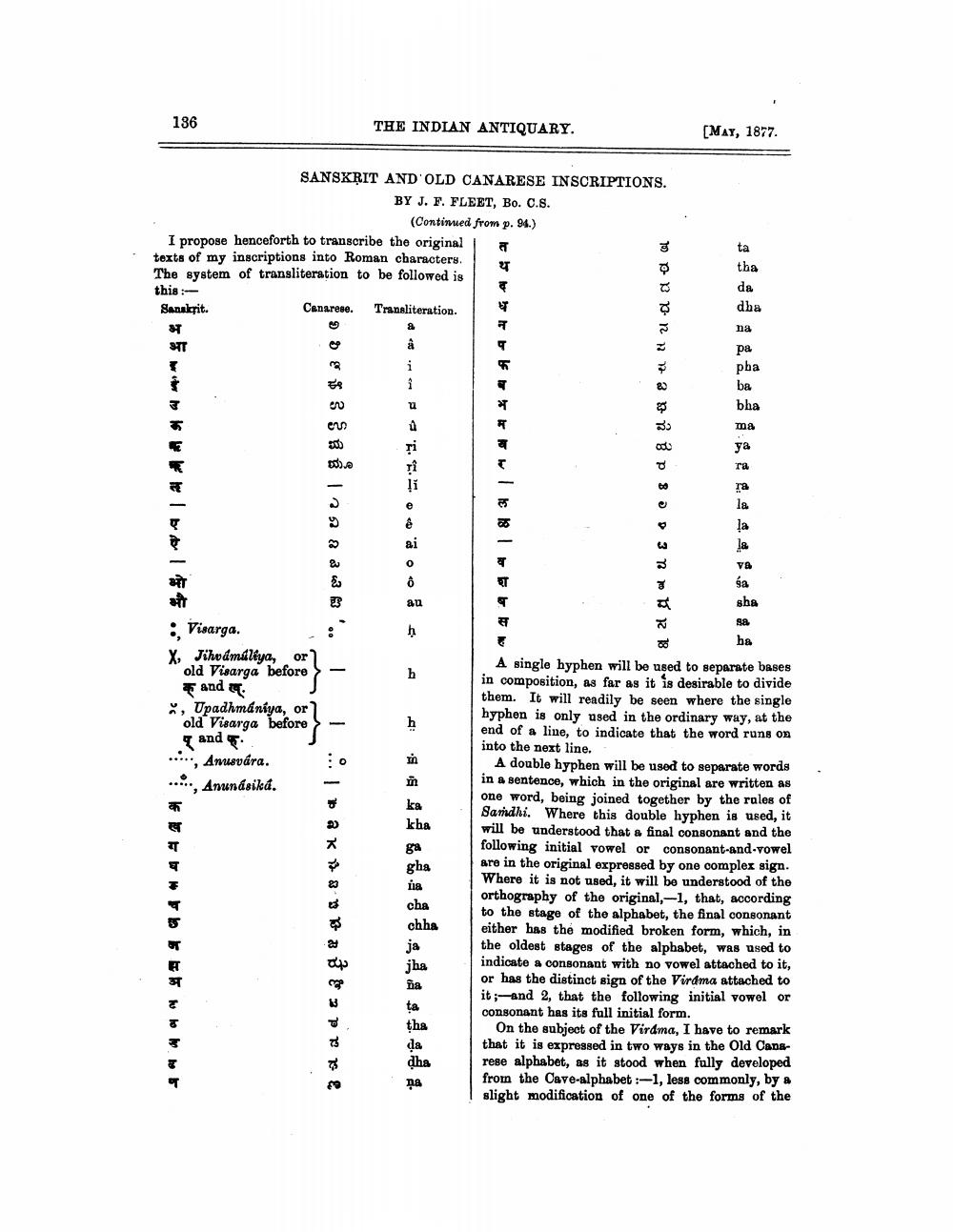________________
136
THE INDIAN ANTIQUARY.
[MAY, 1877.
SANSKRIT AND OLD CANARESE INSCRIPTIONS.
BY J. F. FLEET, Bo. C.S.
(Continued from p. 94.) I propose henceforth to transcribe the original texts of my inscriptions into Roman characters. The system of transliteration to be followod is this :Sanakit.
Canarese. Transliteration.
da dha na pa pba
& $ 3
ba
UE es d eltuda al
bha
52 & 3 633 ..
Sa
al al
-
: Visarga. X, Jihvámúliya, or
old Visarga before Fand , Upadhmaniya, or old Visarga before Fandr.. ****, Amsvára. ... Anunásiká.
-
.. | 1 ak 2 8 1 13 a 3X3 P 2
A single hyphen will be used to separate bases in composition, as far as it is desirable to divide them. It will readily be seen where the single hyphen is only used in the ordinary way, at the end of a line, to indicate that the word runs on into the next line.
A double hyphen will be used to separate words in a sentence, which in the original are written as one word, being joined together by the rales of Sandhi. Where this double hyphen is used, it will be understood that a final consonant and the following initial vowel or consonant-and-vowel are in the original expressed by one complex sign. Where it is not used, it will be understood of the orthography of the original,-1, that, according to the stage of the alphabet, the final consonant either has the modified broken form, which, in the oldest stages of the alphabet, was used to indicate a consonant with no vowel attached to it, or has the distinct sign of the Viráma attached to it;- and 2, that the following initial vowel or consonant has its full initial form.
On the subject of the Virdma, I have to remark that it is expressed in two ways in the Old Cansrese alphabet, as it stood when fully developed from the Cave-alphabet :-1, less commonly, by a slight modification of one of the forms of the
&




